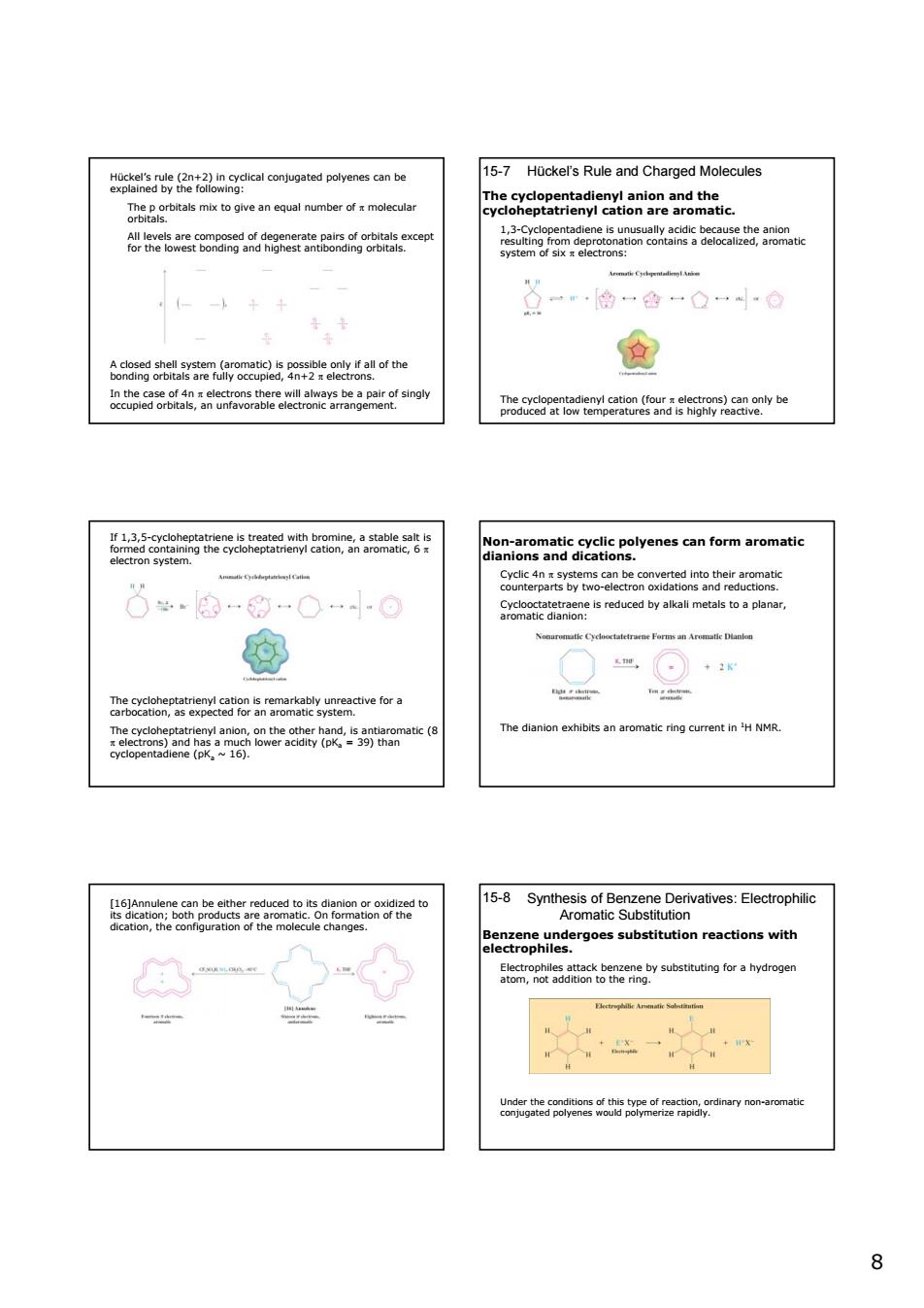正在加载图片...

polvenescan be 15-7 Hacket's Rule and Charged Molecules wa6XEpatntaeat8nanmdhiec orthniatonn oe9h2enyoceta点a2ersaorthe 食 5e共 ienionematRt6peyenesanformaromatic 6--0小 变 6Sopopesnamomagacveora 15-8Syhesis Derivalives: Benzene underg oes substitution reactions with ◆ 5eroRagsateb8eneatysubstnutngtorahrdregen orgaeot6ndnan 88 Hückel’s rule (2n+2) in cyclical conjugated polyenes can be explained by the following: The p orbitals mix to give an equal number of π molecular orbitals. All levels are composed of degenerate pairs of orbitals except for the lowest bonding and highest antibonding orbitals. A closed shell system (aromatic) is possible only if all of the bonding orbitals are fully occupied, 4n+2 π electrons. In the case of 4n π electrons there will always be a pair of singly occupied orbitals, an unfavorable electronic arrangement. 15-7 Hückel’s Rule and Charged Molecules The cyclopentadienyl anion and the cycloheptatrienyl cation are aromatic. 1,3-Cyclopentadiene is unusually acidic because the anion resulting from deprotonation contains a delocalized, aromatic system of six π electrons: The cyclopentadienyl cation (four π electrons) can only be produced at low temperatures and is highly reactive. If 1,3,5-cycloheptatriene is treated with bromine, a stable salt is formed containing the cycloheptatrienyl cation, an aromatic, 6 π electron system. The cycloheptatrienyl cation is remarkably unreactive for a carbocation, as expected for an aromatic system. The cycloheptatrienyl anion, on the other hand, is antiaromatic (8 π electrons) and has a much lower acidity (pKa = 39) than cyclopentadiene (pKa ~ 16). Non-aromatic cyclic polyenes can form aromatic dianions and dications. Cyclic 4n π systems can be converted into their aromatic counterparts by two-electron oxidations and reductions. Cyclooctatetraene is reduced by alkali metals to a planar, aromatic dianion: The dianion exhibits an aromatic ring current in 1H NMR. [16]Annulene can be either reduced to its dianion or oxidized to its dication; both products are aromatic. On formation of the dication, the configuration of the molecule changes. Synthesis of Benzene Derivatives: Electrophilic Aromatic Substitution 15-8 Benzene undergoes substitution reactions with electrophiles. Electrophiles attack benzene by substituting for a hydrogen atom, not addition to the ring. Under the conditions of this type of reaction, ordinary non-aromatic conjugated polyenes would polymerize rapidly